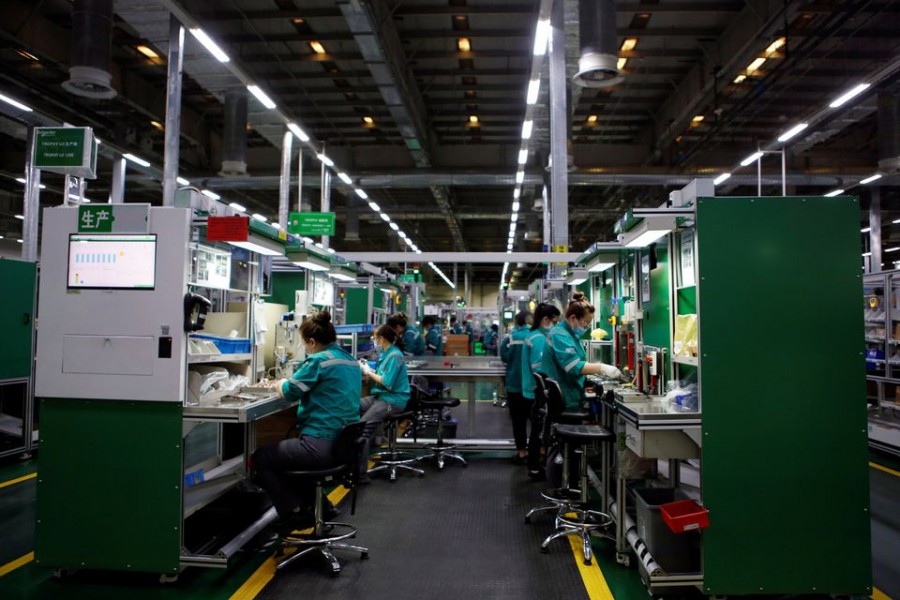Asia's factory activity slowed in May as China's heavy-handed coronavirus curbs continued to disrupt supply chains and dampen demand, adding to woes for some countries in the region that are already struggling with surging raw material prices.
Manufacturers slowed activity last month in economies ranging from Japan to Taiwan and Malaysia, business surveys showed on Wednesday, a sign of the challenge policymakers face in combating inflation with tighter monetary policy - without crippling growth.
China's Caixin/Markit Manufacturing Purchasing Managers' Index (PMI) stood at 48.1 in May, improving slightly from 46.0 the previous month but staying below the 50-point threshold that separates contraction from expansion, a private survey showed.
The outcome was in line with Tuesday's official data that showed China's factory activity fell at a slower pace in May.
While COVID curbs are now being rolled back in some cities, suggesting the country's manufacturing slump has bottomed out, analysts do not expect a rapid economic rebound like that in early 2020, saying fears of fresh outbreaks will continue to weigh on confidence and demand.
"Disruptions to supply chains and goods distribution may gradually ease as Shanghai's lockdown ends. But we're not out of the woods as China hasn't abandoned its zero-COVID policy altogether," said Toru Nishihama, chief economist at Dai-ichi Life Research Institute in Tokyo.
"Rising inflation is forcing some Asian central banks to tighten monetary policy. There's also the risk of market volatility from US interest rate hikes. Given such layers of risks, Asia's economy may remain weak for most of this year."
CHINA SPILLOVER
Lockdowns in China have snarled regional and global logistics and supply chains, with both Japan and South Korea reporting sharp declines in output.
Japan's manufacturing activity grew at the weakest pace in three months in May and manufacturers reported a renewed rise in input costs, the PMI survey showed, as the fallout from China's lockdowns and the Ukraine conflict pressured the economy.
The final au Jibun Bank Japan PMI fell to a seasonally adjusted 53.3 in May from the previous month's 53.5, marking the slowest pace since February.
"Both output and new orders rose at softer rates, with the latter rising at the weakest pace for eight months amid sustained supply chain disruption and raw material price hikes," said Usamah Bhatti, an economist at S&P Global Market Intelligence.
"Disruptions were exacerbated by renewed lockdown restrictions across China, and contributed to a further sharp lengthening of suppliers' delivery times."
Factory activity in the Philippines also slowed to 54.1 in May from 54.3 in April, while that for Malaysia fell to 50.1 from 51.6 in April, PMI surveys showed. Taiwan's manufacturing activity stood at 50.0 in May, down from 51.7 from April.
In a glimmer of hope, South Korea's exports grew at a faster pace in May than a month earlier, data showed on Wednesday, as a rise in shipments to Europe and United States more than offset the fallout from China.
South Korea's monthly trade data, the first to be released among major exporting economies, is considered a bellwether for global trade.
India's factory activity expanded at a better-than-expected pace in May, with demand resilient despite persistently high inflation.


